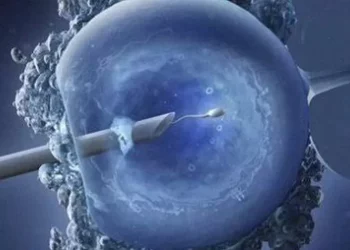Blocked fallopian tubes, medically known as tubal occlusion, are a common cause of female infertility. These tubes play a crucial role in the reproductive process by providing a pathway for the egg to travel from the ovary to the uterus and facilitating fertilization. When blockages occur in one or both fallopian tubes, it can hinder conception and lead to challenges in achieving pregnancy. This article delves into the prevalence, causes, symptoms, diagnosis, and treatment options for blocked fallopian tubes, empowering women with knowledge about this condition and its impact on fertility.
Overview of Blocked Fallopian Tubes
Importance of Fallopian Tubes
Fallopian tubes are thin, tube-like structures located on either side of the uterus. Their primary function is to capture eggs released by the ovaries during ovulation and transport them to the uterus for potential fertilization by sperm. If fertilization occurs, the fallopian tubes also provide an environment for early embryo development before the embryo implants in the uterine lining. Thus, the health and patency of the fallopian tubes are essential for successful conception and pregnancy.
Impact on Fertility
Blockages in the fallopian tubes can disrupt the normal transport of eggs and sperm, impairing fertilization and preventing the embryo from reaching the uterus for implantation. This can result in infertility or an increased risk of ectopic pregnancy, where the embryo implants outside the uterus, typically within the fallopian tube. While some women with blocked fallopian tubes may conceive naturally, others may require medical interventions to address the obstruction and improve their chances of pregnancy.
Prevalence of Blocked Fallopian Tubes
Epidemiological Data
The prevalence of blocked fallopian tubes varies depending on factors such as age, reproductive history, and underlying health conditions. Studies suggest that tubal factor infertility, which includes blockages or damage to the fallopian tubes, accounts for approximately 25-35% of female infertility cases. Among women undergoing fertility evaluations or treatments, tubal factors are identified as the primary cause in a significant proportion of cases.
Common Causes
Several factors can contribute to the development of fallopian tube blockages, including:
Infections: Sexually transmitted infections (STIs) such as chlamydia and gonorrhea can cause inflammation and scarring of the fallopian tubes.
Pelvic Inflammatory Disease (PID): PID, often resulting from untreated STIs or other infections, can lead to extensive inflammation and damage to the reproductive organs, including the fallopian tubes.
Endometriosis: Endometrial tissue growth outside the uterus can affect the fallopian tubes’ function and increase the risk of blockages.
Previous Pelvic Surgeries: Surgeries such as tubal ligation (surgical sterilization), appendectomy, or surgeries to treat ectopic pregnancies may result in scar tissue formation that obstructs the fallopian tubes.
Risk Factors
Sexually Transmitted Infections (STIs)
Untreated STIs, particularly chlamydia and gonorrhea, are significant risk factors for developing fallopian tube blockages. These infections can cause silent damage to the reproductive organs, leading to scarring and tubal obstruction over time.
Pelvic Inflammatory Disease (PID)
PID, a complication of untreated STIs or other pelvic infections, can result in extensive inflammation and tissue damage within the reproductive organs, including the fallopian tubes. Women with a history of PID are at an increased risk of tubal factor infertility.
Previous Pelvic Surgeries
Previous pelvic surgeries, especially those involving the fallopian tubes or nearby structures, can lead to the formation of scar tissue that obstructs the tubes’ normal function. This includes procedures such as tubal ligation, appendectomy, or surgeries to remove ovarian cysts or treat ectopic pregnancies.
Symptoms
Asymptomatic Presentation
Many women with blocked fallopian tubes may not experience any noticeable symptoms, especially if the obstruction is partial or located deep within the tubes. As a result, tubal factor infertility may go undetected until women seek medical evaluation for fertility concerns.
Possible Symptoms
In some cases, women with blocked fallopian tubes may experience symptoms such as:
Chronic Pelvic Pain: Persistent or recurring pelvic pain, often localized to one side, may indicate underlying fallopian tube issues.
Irregular Menstrual Cycles: Changes in menstrual patterns, including irregular or absent periods, may be associated with tubal factor infertility.
Difficulty Getting Pregnant: Inability to conceive despite regular, unprotected intercourse for an extended period is a common symptom of infertility, including tubal factor infertility.
Diagnosis
Diagnostic Tests
Several diagnostic tests can assess the patency and function of the fallopian tubes, including:
Hysterosalpingography (HSG): A specialized X-ray procedure involving the injection of contrast dye into the uterus and fallopian tubes to detect blockages or abnormalities.
Sonohysterography (SHG): An ultrasound-based procedure that evaluates the uterine cavity and fallopian tubes using saline solution infusion.
Laparoscopy: A minimally invasive surgical procedure involving the insertion of a thin, flexible camera (laparoscope) through a small incision in the abdomen to visualize the pelvic organs, including the fallopian tubes.
Hysteroscopy: A procedure that uses a thin, lighted instrument (hysteroscope) to examine the inside of the uterus and detect abnormalities or blockages in the fallopian tubes.
Interpretation of Results
The results of diagnostic tests, such as HSG or laparoscopy, help healthcare providers assess the presence, location, and severity of fallopian tube blockages. Depending on the findings, further evaluation or treatment options may be recommended to address tubal factor infertility.
Treatment Options
Medical Management
In cases where fallopian tube blockages are due to infections or inflammation, medical management may involve:
Antibiotics: To treat underlying bacterial infections, such as STIs or pelvic inflammatory disease.
Anti-inflammatory Medications: To reduce inflammation and alleviate symptoms associated with pelvic inflammatory disease or other inflammatory conditions affecting the fallopian tubes.
Surgical Interventions
Surgical procedures may be necessary to address structural abnormalities or remove scar tissue obstructing the fallopian tubes. These may include:
Tubal Cannulation: A minimally invasive procedure involving the insertion of a catheter through the cervix to clear blockages in the fallopian tubes.
Tubal Reanastomosis: Also known as tubal ligation reversal, this surgical procedure reconnects previously blocked or severed fallopian tube segments to restore tubal patency.
Salpingectomy: Surgical removal of the affected fallopian tube(s), typically performed in cases of severe damage or irreparable blockages.
Assisted Reproductive Technologies (ART)
For women with bilateral tubal blockages or other fertility challenges, assisted reproductive technologies such as in vitro fertilization (IVF) offer alternative pathways to conception. IVF involves retrieving eggs from the ovaries, fertilizing them with sperm in a laboratory setting, and transferring resulting embryos into the uterus for implantation. By bypassing the fallopian tubes, IVF can facilitate conception in cases where natural conception is not feasible due to blocked fallopian tubes or other infertility factors.
Outlook and Prognosis
Success Rates
The success rates of treatment options for blocked fallopian tubes vary depending on factors such as the underlying cause, the severity of tubal blockages, and the individual’s age and overall reproductive health. Success rates may also differ between natural conception, surgical interventions, and assisted reproductive technologies.
Natural Conception: For women with mild or reversible tubal blockages, the chances of achieving pregnancy through natural conception may be higher. However, success rates may be lower for women with severe or irreversible tubal damage.
Surgical Interventions: Tubal surgeries such as tubal cannulation or tubal reanastomosis can have varying success rates, with factors such as the extent of tubal damage and the skill of the surgeon influencing outcomes.
Assisted Reproductive Technologies (ART): In vitro fertilization (IVF) offers high success rates for women with tubal factor infertility, as it bypasses the fallopian tubes altogether. Success rates for IVF may be influenced by factors such as the quality of eggs and embryos, the age of the woman, and the expertise of the fertility clinic.
Individual Factors
The prognosis for women with blocked fallopian tubes depends on individual factors such as:
Cause and Severity of Blockage: The underlying cause and extent of tubal damage can influence the success of treatment options and the likelihood of achieving pregnancy.
Age: Advanced maternal age is associated with reduced fertility and lower success rates of fertility treatments. Women’s reproductive capacity declines with age, affecting egg quality and the likelihood of conception.
Overall Reproductive Health: Factors such as ovarian reserve, uterine health, and the presence of other infertility factors may impact the overall prognosis for achieving pregnancy.
Conclusion
Blocked fallopian tubes can present significant challenges for women aspiring to conceive, highlighting the importance of early detection, diagnosis, and appropriate management. While tubal factor infertility can be distressing, there are various treatment options available to improve fertility outcomes and increase the chances of pregnancy. By raising awareness about the prevalence, causes, symptoms, diagnosis, and treatment of blocked fallopian tubes, women can take proactive steps to address fertility concerns and pursue their dreams of parenthood.
Empowerment and Awareness
It is essential for women to seek medical evaluation if they suspect they have blocked fallopian tubes or are experiencing difficulty conceiving. Early diagnosis and intervention can improve the likelihood of successful treatment outcomes and enhance reproductive health. Additionally, seeking support from healthcare providers, fertility clinics, and support groups can provide valuable guidance, resources, and emotional support throughout the fertility journey.
Support and Resources
For women facing challenges with infertility, there are numerous resources available to provide support and guidance:
Fertility Clinics: Consultation with fertility specialists can offer personalized evaluation, treatment options, and ongoing care for infertility.
Support Groups: Joining support groups or online communities for individuals experiencing infertility can provide a sense of community, empathy, and shared experiences.
Fertility Organizations: Organizations such as RESOLVE: The National Infertility Association offer education, advocacy, and support services for individuals and couples struggling with infertility.
Counseling Services: Seeking counseling or therapy can help individuals cope with the emotional impact of infertility and navigate the complex feelings associated with fertility challenges.
By accessing these resources and engaging in proactive communication with healthcare providers, women can empower themselves to make informed decisions about their reproductive health and pursue the path to parenthood with confidence and resilience.
Related Topics:
Penn Fertility’s IVF Success Rates: Everything You Need To Know



























